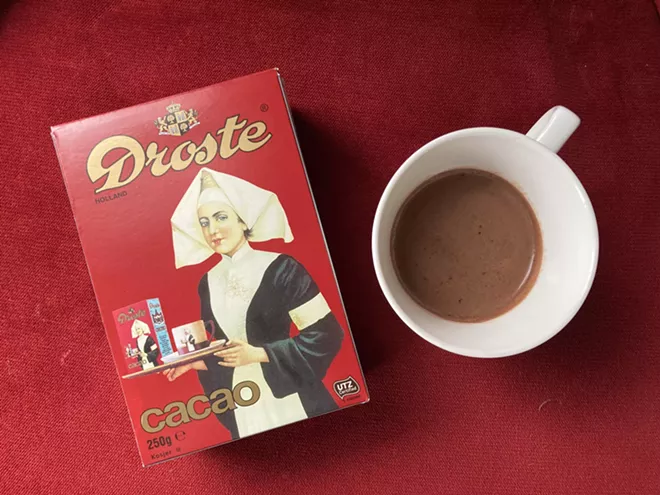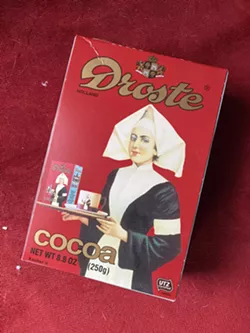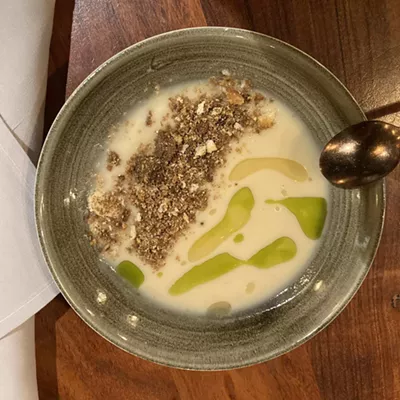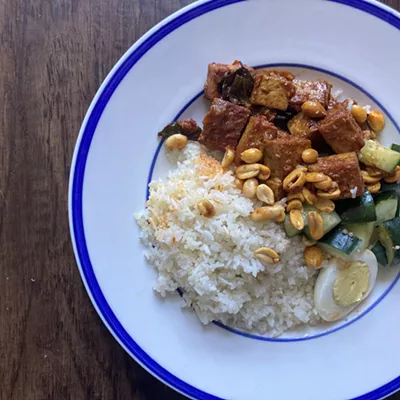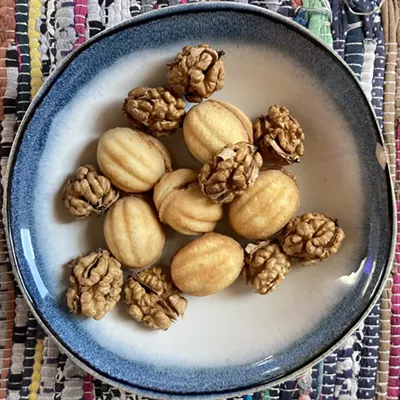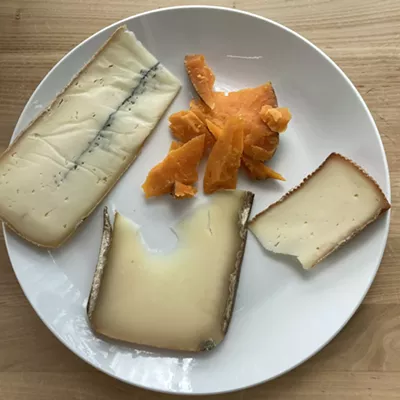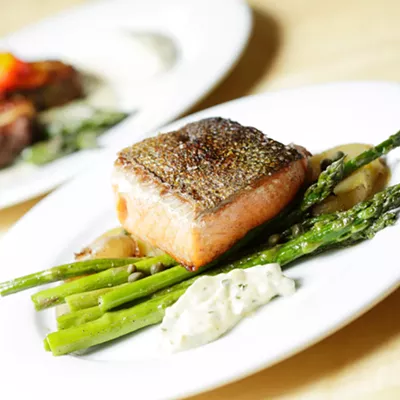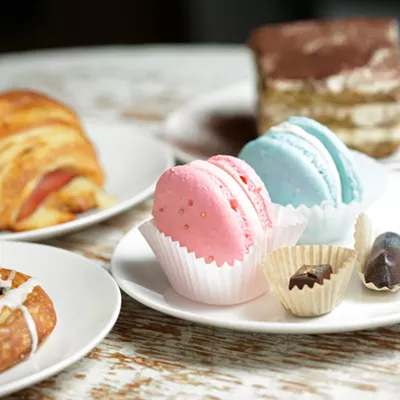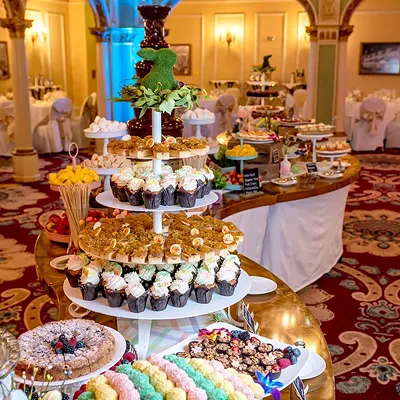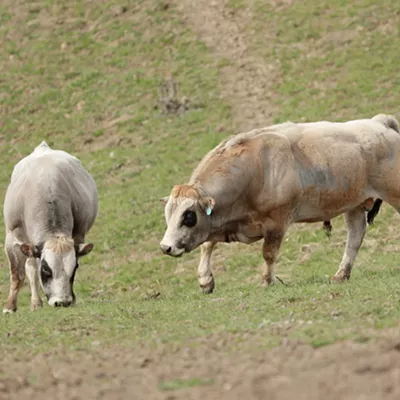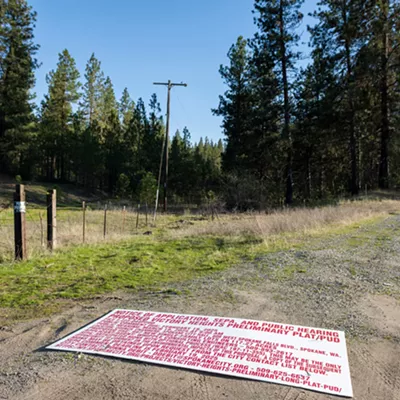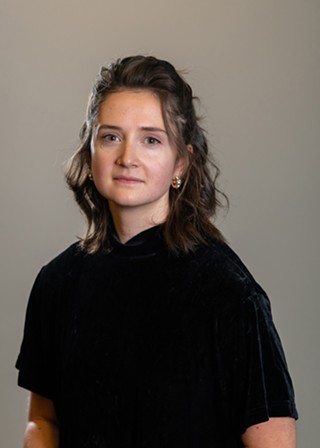Count of dishes/places: 26
Few things change the world. It's an important truth for journalists to come to terms with, especially journalists (read: Eliza in grad school) with dreams of policy change and cultural shifts from transformed, activated readers.
To add insult to injury, whatever does end up making a big impact on the world is usually unpredictable, or at least unforeseen. We spend a lot of time parading as prophets for how wrong we usually are. We don't know what the next invasion will bring, when the next pandemic will be or who will suddenly ditch R&B for country.
The two foods featured in this week's Around the World installment changed their worlds, or at least had outsized effects, far more than what was predicted. I'm glad, because I think our world is better for them. But they also serve as delicious reminders that we never quite know what will turn the tables next.
DROSTE COCOA FROM HAARLEM, THE NETHERLANDS
The Dutch didn't invent cocoa, but they did invent the cocoa press. Coenraad Van Houten was an early 19th century Dutch chemist who invented a hydraulic press that removed about half the cocoa butter from ground cacao beans. He then finished the process by mixing the remaining cocoa powder with alkaline salts that improve the powder's ability to mix with liquid. This alkaline treatment became known as "Dutching."
Before Van Houten's invention of the hydraulic press in 1828, cocoa was always a drink. But powdered cocoa helped give rise to chocolate solids, which then kickstarted the chocolate confectionary era of human history.
Thirty-five years later, Gerardus Johannes Droste opened a sweet shop in Haarlem, the Netherlands, which became famous for its small chocolate pastilles. His candies were such a success that he opened a larger factory in 1890. It quickly relocated in 1891 to its longtime location on the Spaarne river just north of Haarlem's downtown core. The riverfront location allowed raw materials to be shipped and floated directly into the factory's front door, and allowed for easy exportation of Droste chocolate around the world.
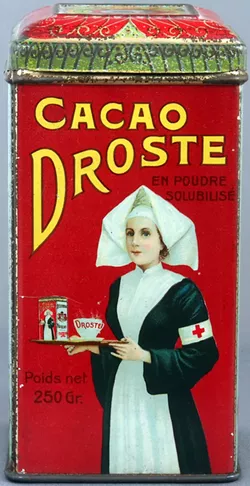
It wasn't the first time an artist employed this mind- bending technique. Giotto's Stefaneschi Triptych from the 14th century depicted Cardinal Stefaneschi holding the same triptych in miniature on one of its panels. But Musset employed this technique for Droste right as chocolate was infiltrating international trade, and the "picture-within-a-picture" experience became irrevocably known as the "Droste effect."
Today, the Droste effect is taught in art history classes all around the world. Perhaps the most famous examples are Pink Floyd's Ummagumma album art. A 2020 Japanese micro-budget sci-fi film Beyond the Infinite Two Minutes created quite a festival stir by creating a feature length film based on the terrifying eternal cycle of the Droste effect. The impact, as the picture itself, keeps coming back.
During World War I, Droste started making Unit Bars for soldiers on the front lines. In the years between the wars, Droste opened offices in Paris, Prague, London, New York, Boston and Chicago, spreading its fame and advertisements even farther. But during World War II, the Droste factory in Haarlem was severely damaged by Allied bombs. It took decades for the company to recover after the war, but by 1960 Droste was shipping internationally again. Droste production moved further east to Vaassen in 1986.
The old Droste factory on the Spaarne was abandoned for years until it was taken over by a luxury apartment developer. In the late 2000s, over 220 high-end lofts were built in the old manufacturing building. The ground floor apartments where cacao boats arrived a century ago are still accessible by private jetty.
Now, whenever anyone sails into the antique factory, they'll see a vintage Droste advertisement painted on the brick facade of the factory facing the river. A nurse still proudly displays a tin and a cup and the picture puzzle that delights the whole world. The Droste effect is still spiraling as its chocolate circles the globe, even sailing onto a shelf at Main Market in Spokane.
EINKORN FROM KARACADAĞ VOLCANO

About 10,000 years ago, Neolithic humans started planting a handful of "founder crops," mostly ancient grains and legumes, in the Fertile Crescent. One of those founder crops was einkorn. Ötzi the Iceman, the earth's oldest mummy, is said to have eaten meat, herbs and einkorn bread shortly before he died.
In the late 1990s, a team of scientists from Norway, Germany and Italy traced einkorn's roots back to the Karacadağ mountains on the Turkey-Syria border. Mount Karaca is a shield volcano that feeds both the Tigris and Euphrates rivers, ancient waterways linked by religion and science to the first humans. In addition to einkorn and other grains, the area is thought to be the originator of chickpeas and lentils, too.
Einkorn is famous not only for being the world's oldest wheat, but also for never being hybridized. Sometime after its domestication, a different ancient wheat got crossed with two goatgrass weeds. The resulting plant was easier to harvest and thresh. It became common wheat, which today accounts for 95% of the world's wheat production. Einkorn wheat was effectively left for the birds.
That is, until Carla Bartolucci came on the scene. The 21st century American food distributor living in Italy started wondering if her daughter Giulia was sensitive to gluten. Bartolucci came across einkorn while researching different wheats. The ancient grain is often promoted as an easier flour to digest because of a "primitive," less inflammatory gluten structure.
It's definitely true that einkorn doesn't perform well in most baking situations because of its dismal gluten structure — it doesn't rise well in breads and pastries. When Bartolucci experimenting with it at home, some of Giulia's symptoms started to go away. The whole family was totally enamored with einkorn. Bartolucci and her husband started Jovial Foods to promote einkorn products. Bartolucci even wrote a cookbook about using the flour at home.
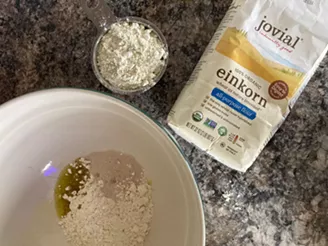
In 2008, Jovial Foods contracted a farmer in Northern Italy to grow 50 acres of einkorn wheat. The world's oldest wheat yields about a fifth the amount of common wheat, and when they brought the first harvest to a mill, the operator thought the wheat berries would be too small to produce much flour. Apparently, he was wrong. By 2015, Jovial Foods was the world's largest einkorn producer, farming about 3,000 acres in Tuscany and northern Italy.
Lest you think it's only in the Old World, einkorn has made its way to the rolling hills of Central Washington, too. Bluebird Grain Farms is a vertically integrated wheat producer out of Winthrop, Washington, dedicated to organic emmer and einkorn wheats, as well as rye, red spring wheat and white spring wheat. They offer direct wholesale to restaurants, specialty stores, bakeries, personal chefs and buyers clubs.
So far, Bluebird Grain Farms' einkorn hasn't made it to Spokane. But if wheat has proven anything in the last 10,000 years, it's that it's good at spreading. Maybe this centuries-old grain isn't done changing lives yet. n
Have an idea for what I should eat next? Wanna make me a traditional dish from your hometown, or help save a food species from extinction? Send 80 Plates tips and ideas to elizab@inlander.com.

